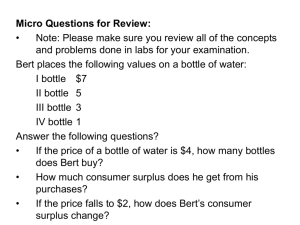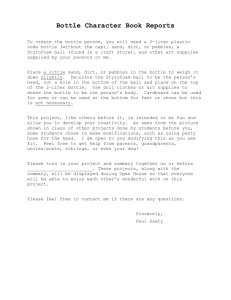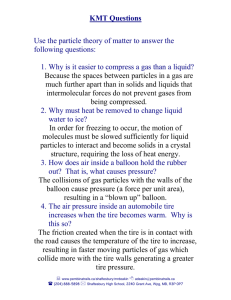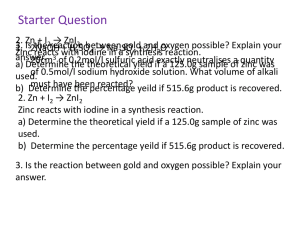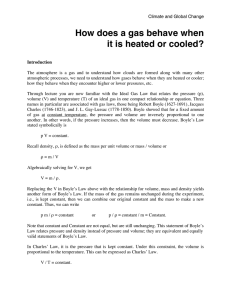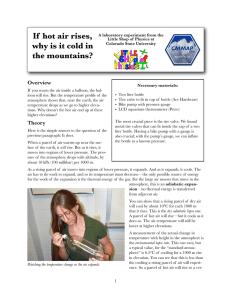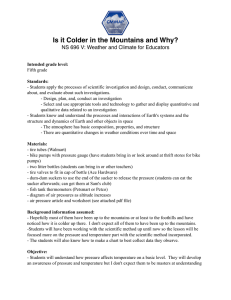Exploring Relationships Between Pressure, Temperature, and Volume
advertisement
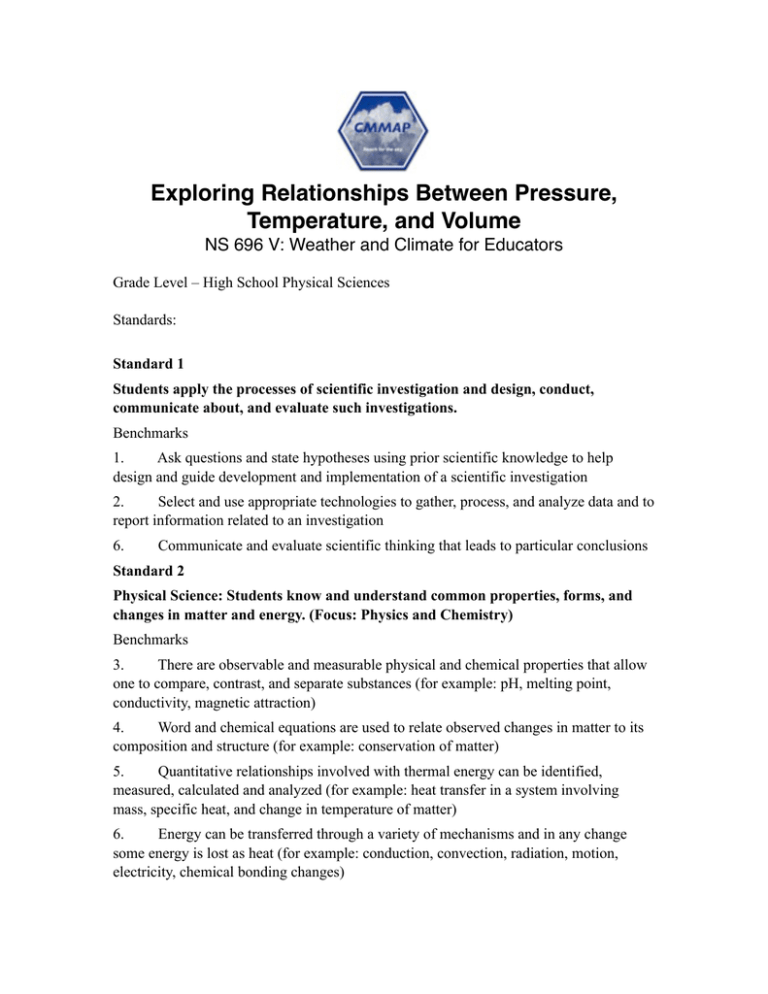
Exploring Relationships Between Pressure, Temperature, and Volume NS 696 V: Weather and Climate for Educators Grade Level – High School Physical Sciences Standards: Standard 1 Students apply the processes of scientific investigation and design, conduct, communicate about, and evaluate such investigations. Benchmarks 1. Ask questions and state hypotheses using prior scientific knowledge to help design and guide development and implementation of a scientific investigation 2. Select and use appropriate technologies to gather, process, and analyze data and to report information related to an investigation 6. Communicate and evaluate scientific thinking that leads to particular conclusions Standard 2 Physical Science: Students know and understand common properties, forms, and changes in matter and energy. (Focus: Physics and Chemistry) Benchmarks 3. There are observable and measurable physical and chemical properties that allow one to compare, contrast, and separate substances (for example: pH, melting point, conductivity, magnetic attraction) 4. Word and chemical equations are used to relate observed changes in matter to its composition and structure (for example: conservation of matter) 5. Quantitative relationships involved with thermal energy can be identified, measured, calculated and analyzed (for example: heat transfer in a system involving mass, specific heat, and change in temperature of matter) 6. Energy can be transferred through a variety of mechanisms and in any change some energy is lost as heat (for example: conduction, convection, radiation, motion, electricity, chemical bonding changes) CMMAP Lesson Plan Pressure, Temperature, Volume Overview In my experience, gas pressure is a very difficult concept for students to grasp. The effects of air pressure and temperature on the weather have the additional difficulty because the air is not physically contained. While students understand that adding air to a tire causes an increase in pressure and also the volume of the tire many students have difficulty in understanding how pressure and temperature are related. Background information In the ideal state gasses follow certain well defined laws, which included Boyle’s Law, Charles’s Law, and Gay-Lussac’s Law. Boyle’s Law relates gas pressure and volume are inversely proportional at a constant temperature. In order to double the pressure of a gas at a constant temperature the volume must be reduced by one half. Boyle’s Law states: At a constant temperature Pressure times Volume is constant (pV = k) Charles’s Law relates gas volume and temperature at a constant pressure. It states that gas temperature and volume are directly proportional at a constant pressure. In order to double the volume of a gas at constant pressure the absolute temperature must be doubled. Charles’s Law states: At constant pressure gas Volume divided by Temperature is constant V/T = k Gay Lussac’s Law relates gas pressure and temperature at a constant volume. This Law states that gas pressure and temperature are directly related at a constant volume. This means that in order to double the pressure at a constant volume the absolute temperature must be doubled. Gay Lussac’s Law states: At a constant volume Pressure divided by Temperature is constant Together these three laws form the foundation of the Ideal Gas Law. P/T = k Objective: Students will investigate Gay Lussac’s Law relating pressure and temperature at a constant temperature. Through the investigation the student should gain a basic understanding of how pressure and temperature are related. Theory: Present students with the question “If hot air rises, why it is cooler in the mountains?” Warm air will rise but as the warm air rises the surrounding air pressure becomes less. The lessening of the surrounding air pressure allows the warmer rising air to expand. As this warm air expands it occupies more volume which will cause the rising air to cool. Dry air will cool at a rate of approximately 100 C for each 1000 meter increase in elevation. This is called the dry adiabatic lapse rate. The average temperature change on Earth is around 6.50 C for each 1000 meters is elevation. There are many different factors that attribute to this difference including the moisture content or humidity in the air. Materials: Each group will need the following: One (1) – clean, empty two (2) liter bottle One (1) – bottle cap fitted with a tire valve One (1) – LCD thermometer Bike pump with pressure gauge (to be shared between groups) Engage: Have students blow up a balloon and discuss with them what aspects of the balloon are changing. Have students discuss the volume of the balloon. Ask the students what would happen if air was added to an object whose volume would not change. Explore: Demonstrate with a pressure vessel how temperature affects pressure. Have students discuss the effects of the temperature on the pressure inside the vessel. Explain: Discuss the gas laws with students and how temperature and pressure are related. Explain how at constant volume a change in temperature causes a change in pressure. Remind the students that temperature is a measure of kinetic (moving) energy and that pressure is a measurement of force. The faster something moves the more force it can exert. Some of that energy can be converted to heat energy by the increased collisions. Elaborate through experimentation Supply each group of students with a two liter pop bottle fitted with a tire valve and a thermometer in side. Have students predict what will happen if air is pumped into the bottle with a bicycle pump. Students should then predict what will happen if the bottle is allowed to sit undisturbed for a while. (Will the temperature change? Will the pressure change?) Have students predict what will happen if the air is released form the bottle. Does the rate of the air release have any affect on the results? Students should record temperatures in lab notebooks. Evaluate: Have students discuss the results of the experiment. Using the results of the experiment, have the students make predictions about real life situations. Lesson generated by Thomas Murray



